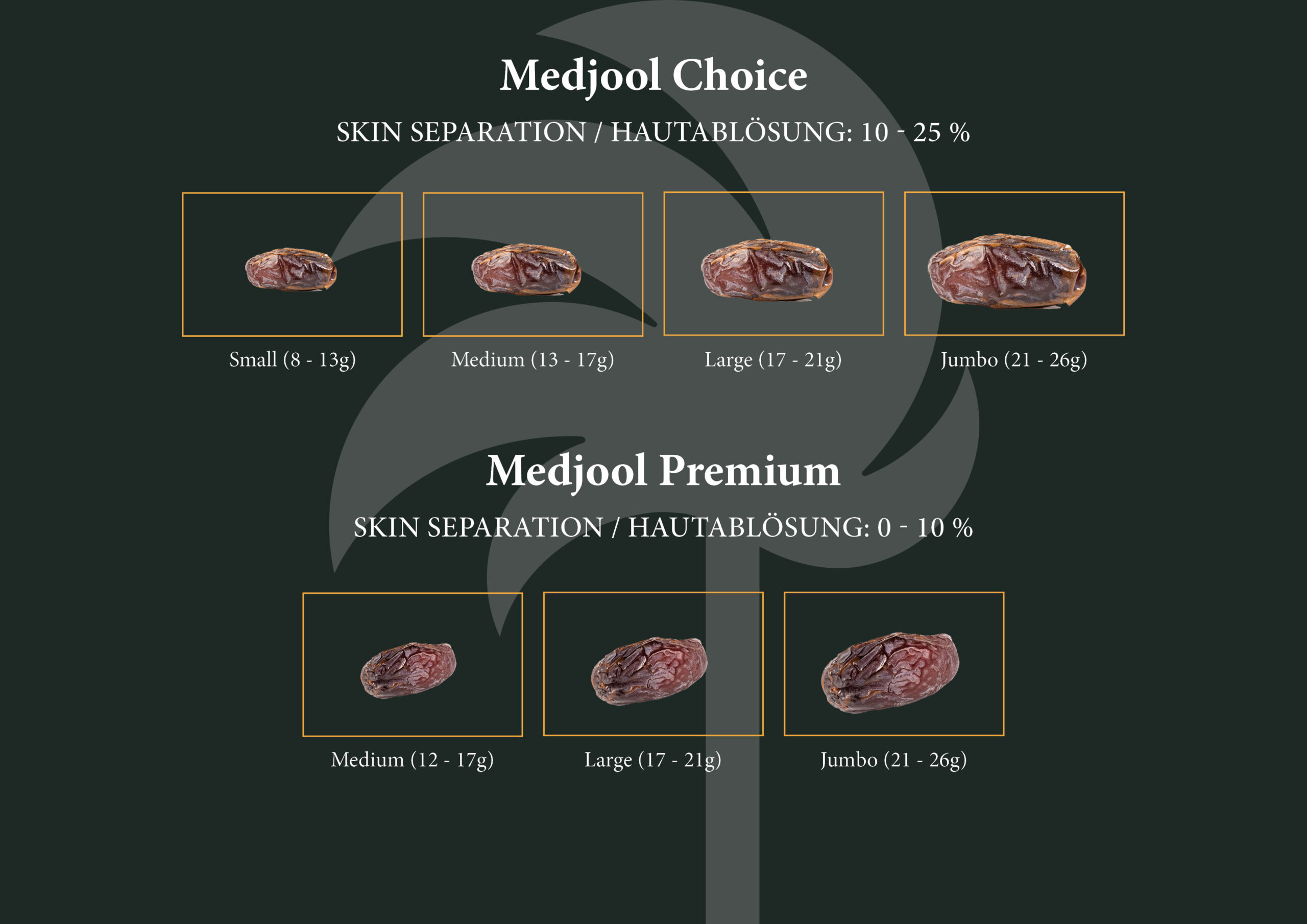FAQ
The UNECE DDP-08 standard developed by the United Nations Economic Commission for Europe defines the trade and quality requirements for dates – it is our basis for the highest quality.
Through careful exchange along the entire production process, strict controls, random sample analyses and a long-term partnership, we can achieve an even better result than prescribed. This is how we ensure consistently high quality.
We will be happy to provide you with the relevant product specifications on request.
Dates are harvested once a year, as date palms only bear fruit once a year. Female date palms are the plants that bear the fruit. In order to produce dates, female date palms must be fertilized with pollen from male date palms.
They thrive best in warm, dry conditions and require good soil quality as well as a small but regular supply of water directly at the roots. Careful care is also crucial for the harvest.
The time of harvest depends heavily on the weather conditions and varies from region to region:
Tunisia: September – October
Palestine: August – September
Saudi Arabia: August – September
South Africa: March – April
Despite their long best-before date, dates are sensitive fruits whose shelf life can quickly be affected by improper storage, depending on the variety and degree of ripeness. Proper storage, on the other hand, ensures that dates retain their sweetness, freshness and nutrients over longer periods of time and are protected from insect and mold infestation.
Storage at room temperature
If dates are consumed within 1-2 weeks, they can be stored at room temperature. A cool and dry place protected from direct sunlight and moisture is important. The ideal temperature is around 15-20 °C.
Long-term storage
For long-term storage, we recommend storing at temperatures of around 3-7 °C. Direct sunlight and moisture should also be avoided here. Depending on the type of date, we recommend the following storage methods to ensure freshness:
- Medjool dates: -18 °C. For short storage periods (3-4 weeks) 0 to 4 °C
- Deglet Nour dates: 3 to 7 °C
- Kenta dates: 3 to 7 °C
- Khouet Allig dates: 3 to 7 °C
- Khudri dates: 5 to 7 °C
- Mabroom dates: 5 to 7 °C
Medjool dates are among the most popular date varieties and are characterized by their large size, intense taste and high pulp content. However, there are differences in quality, which are divided into three main categories:
1st choice (often referred to as “premium dates”)
2nd choice (often known as “Choice”, “Delight” or “Selected”)
3rd choice (labeled as “Classic”. Suitable for further processing or as a low-cost alternative)
The main difference between the quality grades lies in the skin separation of the dates. Greater skin separation can lead to brown spots, which affects the appearance. However, these dates are no less delicious and also have an excellent taste – only the appearance varies.
Our premium dates have a skin separation of 0-10% and are generally somewhat firmer.
Our Choice dates have a skin separation of 10-25% and are usually slightly softer.
Classic dates are not part of our standard range and are only available on request.
